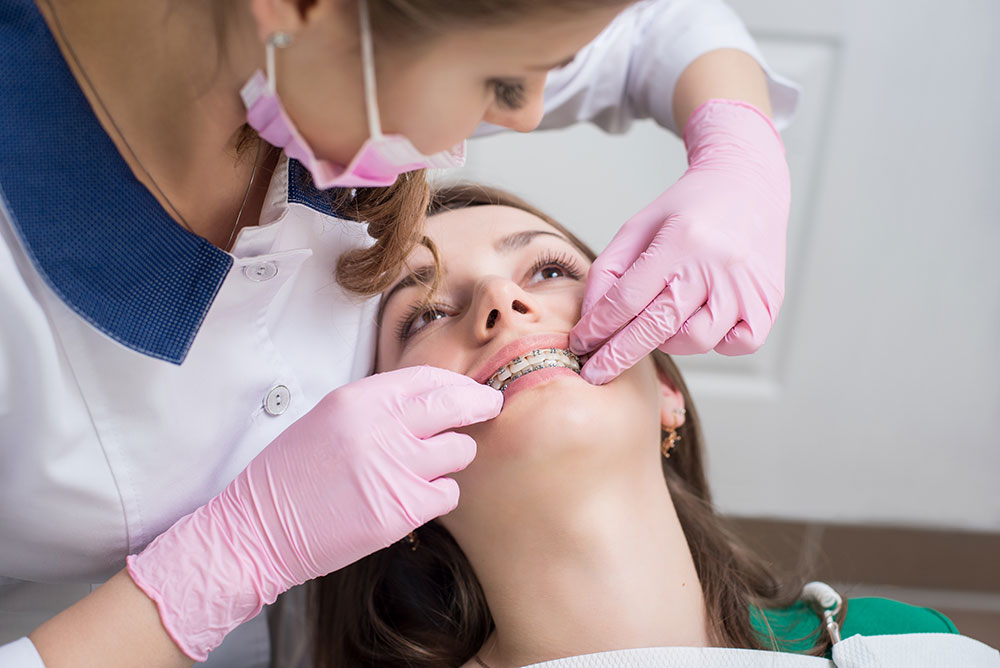Some Ideas on Legacy Orthodontics You Should Know
An orthodontist is a dentist trained to identify, prevent, and deal with teeth and jaw abnormalities. They fix existing conditions and are trained to identify problems that may create in the future. Orthodontists function with individuals of any ages, from children to grownups. Individuals frequently associate an ideal smile with healthiness.
Malocclusion, or misaligned teeth, can cause dental concerns, consisting of dental caries, gum illness, and challenging or painful eating. But not every person is born with straight teeth. If you have a poor bite or large rooms in between your teeth, you may intend to speak with a dental expert focusing on orthodontic treatment.
Not known Facts About Legacy Orthodontics
( Image Credit Report: DigitalVision/Getty Images) Orthodontists use taken care of and detachable oral devices, like braces, retainers, and bands, to alter the setting of teeth in your mouth. Orthodontic therapy is for oral irregularities, including: Crooked teethBite problems, like an overbite or an underbiteCrowded teeth or teeth that are too much apartJaw misalignmentThe objective of orthodontic treatment is to boost your bite.
A healthy bite guarantees you can consume, chew, and talk properly. While you might think about orthodontists as generally for kids or teens who need braces, they can correct dental problems at any type of age. Orthodontists go to college, dental college, and orthodontic institution. After college graduation, they spend 2 or 3 years in an orthodontic residency program.
, yet not all dentists are orthodontists. They focus on 2 areas: Just how to appropriately and safely move teeth Exactly how to appropriately lead advancement in the teeth, jaw, and faceOnce an orthodontist has completed training, they have the option to end up being board licensed.
Fascination About Legacy Orthodontics
Imbalance, or malocclusion, is the most typical reason individuals see an orthodontist. It is hereditary and is the result of dimension distinctions in between the upper and reduced jaw or in between the jaw and teeth. Malocclusion brings about tooth overcrowding, a misshapen jaw, or irregular bite patterns. Malocclusion is normally treated with: Your orthodontist connects steel, ceramic, or plastic square bonds to your teeth.
If you have only minor malocclusion, you may have the ability to use clear dental braces, called aligners, instead of typical braces (https://www.cybo.com/US-biz/legacy-orthodontics_2w). Some people require a headgear to help relocate teeth right into line with pressure from outside the mouth. After braces or aligners, you'll need to use a retainer. A retainer is a personalized device that maintains your official statement teeth in position.
They're usually utilized on kids. They can develop additional space in the mouth without having to pull teeth. If you have a serious underbite or overbite, you might require orthognathic surgical treatment (additionally called orthodontic surgical procedure) to lengthen or reduce your jaw. Orthodontists use cables, medical screws, or plates to support your jaw bone.
You might need to see an orthodontist if you have: Crowding or not enough room for all of your teethOverbite, when your top teeth come over your bottom teethUnderbite, when your base teeth are also far forwardSpacing or concerns with gapsCrossbite, which is when your upper teeth fit behind your bottom teeth when your mouth is closedOpen bite or a vertical space between your front base and top teethMisplaced midline, when the facility of your bottom and top teeth don't align Remedying an oral malocclusion can: Make biting, chewing, and talking easierImprove the proportion of our face and your total appearanceEase pain from temporomandibular joint conditionsSeparate your teeth and make them easier to clean up, helping protect against dental caries or dental caries It's commonly a dental practitioner that initially notices misaligned teeth throughout a routine examination.
Little Known Facts About Legacy Orthodontics.

During your initial orthodontic assessment, you'll likely have: An oral examPhotos taken of your face and smileDental X-raysPanoramic (360 degree) X-rays of your face and headImpressions to create mold and mildews of your teethThese examinations will aid your orthodontist know just how to continue with your treatment. leesburg orthodontist. An orthodontist is a dental practitioner who's had training to treat your teeth and jaw
Orthodontists may carry out surgery, exams,X-rays,and even more to aid you achieve an extra comfy, healthier smile. An orthodontist is concentrated on your bite, so something like a damaged tooth would certainly be dealt with by a dentist. Orthodontists are dental professionals but not all dental experts are orthodontists. Orthodontists are concentrated on your bite, or the means your teeth fit together, and the straightness of your teeth.
Ever questioned just how stars constantly seem to have perfectly straightened teeth? The solution often hinges on the competent hands of an orthodontist. What specifically does an orthodontist do? Orthodontists are oral specialists that concentrate on correcting irregularities in the teeth and jaws. Their know-how exceeds just developing a gorgeous smile; it reaches enhancing your total oral health and feature.
Get This Report about Legacy Orthodontics

While braces are the most typically acknowledged orthodontic therapy, orthodontists have a diverse toolkit at their disposal. The certain approach selected relies on the severity of the case, the patient's age, and individual choices. These reliable braces use a system of brackets adhered to the teeth and connected by wires.
These detachable trays are custom-made to progressively shift the teeth's setting. In situations of slim jaws, palatal expanders can be utilized to develop area for appropriate tooth alignment.
Comments on “Getting My Legacy Orthodontics To Work”